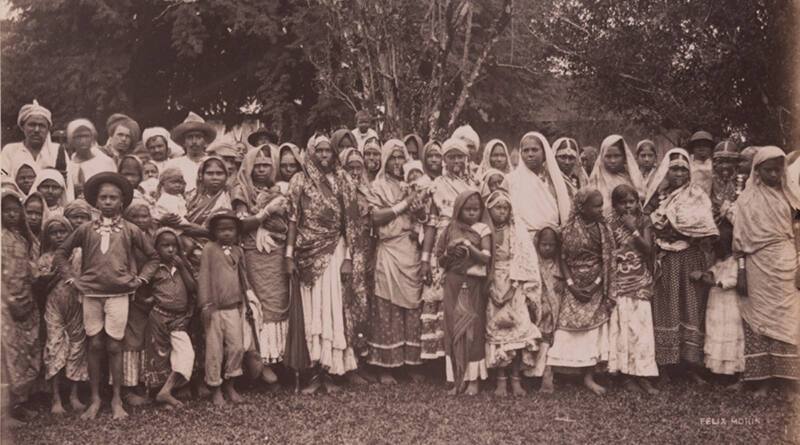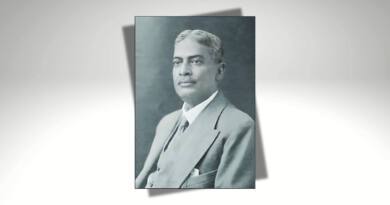African-Indian Diaspora Now: The Truth And Roots
The Indian diaspora in Africa has deep historical roots and continues to possess significant strength in the present day.
WFY BUREAU AFRICA: India has a historical relationship with Africa that spans over three thousand years, encompassing both cultural and commercial interactions. Commercial interactions have a more extensive historical background compared to cultural contacts. Indian records suggest that there were interactions and commercial ties between Dravidians and Babylonians dating back to the seventh century B.C. During their journey to Mesopotamia, it is quite likely that the Indian traders and sailors would have made a stop in Southern Arabia, which is located along the sea route, maybe in the eastern part of the Horn of Africa—the Somali peninsula.
According to Freya Stark, there was a prosperous marine trade between India and Southern Arabia prior to the fourteenth century B.C. (Richard: 1954, 28–30). The eastern and southern coasts of Africa predominantly hosted ancient Indian contacts. Ancient Indian epics like the ‘Vedas’ and the ‘Shrimad Bhagwat Geeta’ contain valuable information about these contacts. Daniel D.C. Don Nanjira accurately asserts that Indians (Hindus) were indeed among the early invaders of East Africa, who had established contacts with the East African coast long before the time of Christ. The given text represents the year 1976 and the month of March.
However, colonialism has intricately linked significant migration movements throughout recent history. During the time of British colonial rule in India, many Indians were forced to work as indentured labourers in various parts of the British Empire in the 19th and early 20th centuries. The present Indian Diaspora, with its unique characteristics in Africa, the Caribbean, and other regions, reflects this historical event.
During this time, Indians served in three main roles:
(i) as indentured workers in sugar colonies in the Caribbean, Oceania, and Africa;
(ii) under the Kangani/maistry system in Malaysia and Ceylon; and
(iii) as free or passenger Indians, largely in East Africa.
According to estimates, around 769,437 Indians went to Mauritius, South Africa, Reunion, the Seychelles, and the East African region between 1829 and 1924 (Kadekar, 2005, 36). In the later phase of the colonial era, there was a notable rise in the number of individuals who freely emigrated. These people included clerks, professionals, bankers, skilled craftsmen, traders, small-scale contractors, and business owners.
After the oil boom of the mid-1970s, there has been a significant influx of Indian labourers in the Middle East in post-independence India. In the current period of liberalisation, privatisation, and globalisation, the United States of America, Canada, and West European countries have become popular destinations for highly trained Indian immigrants. However, there are still major opportunities in Africa that attract a considerable number of Indian migrants. The majority of new immigrants choose to move there on a temporary work permit and do not actively pursue permanent citizenship. After gaining experience at their current workplace, they actively seek opportunities in Western countries. Once they have the opportunity, they promptly relocate from their current locations. In the late 1990s, this trend experienced a significant surge, and a considerable number of illegal migrants also exploited this situation.
A few years ago, ‘The Analyst’, a magazine from Kenya, stated that official records indicated that only 1918 work permits were issued between 1995 and 1997. Nevertheless, uncorroborated accounts indicate that between 30,000 and 40,000 migrant labourers from the Asian subcontinent have migrated to Kenya within the past four years.
The year is 1999, and the month is September. The term “Asian” in this context refers to those from India, Pakistan, Bangladesh, and Sri Lanka, with the majority being of Indian origin. There was a survey conducted in Kenya between June and July 2007, with a sample size of 100 participants. The survey findings suggest that Indian immigration to Africa is still continuing.
Moreover, the official records of the Government of India also document a growing presence of Indian communities across the African continent. The 2001 report of the High Level Committee on Indian Diaspora revealed that there were a total of 2,063,178 individuals of Indian descent living in Africa. The total number consists of 1,969,708 people of Indian origin (PIOs), 89,405 non-resident Indians (NRIs), and 3,500 displaced people. Their presence extended throughout 34 countries situated in diverse regions of the continent.
The most recent estimates of Indians living abroad indicate that there are currently 2,696,956 individuals of Indian origin in Africa. Out of this population, 2,508,503 are persons of Indian origin (PIOs), while the remaining 155,897 are non-resident Indians (NRIs). The Indian Diaspora currently dwells in 46 African countries, encompassing all linguistic, cultural, and geographical regions of Africa (Ministry of Overseas Indian Affairs, 2010). The Indian Diaspora in Africa accounts for 12.48 percent of India’s overall diasporic population. It is worth mentioning that over 93 percent of the Indian Diaspora in Africa are Persons of Indian Origin (PIOs), making up 21.13 percent of the total number of PIOs worldwide.
Regarding the population of the Indian Diaspora in different countries in Africa, there is significant diversity. In Mauritius, the Indian Diaspora makes up 70 percent of the overall population, while in the Republic of Sao Tome and Principe, this number is only 3 percent.
In order to assess the present influence of the Indian Diaspora in Africa, we can categorise them into four main groups:
(1) Predominant presence,
(2) Significant presence,
(3) Limited presence, and
(4) Minimal presence.
The fourth category consists of nations where the size of the Indian diasporic population is below 10,000 individuals, indicating minimal strength. There are around 33 African countries that belong to this group. Due to their dispersion throughout many geographic regions of their host country, they do not form a unified constituency. Furthermore, in many instances, they are temporary residents who are employed on projects and still maintain their Indian passport. Thus, politically speaking, their presence is of little value, and they are often unable to secure political positions in the country they reside in. Malawi is the sole instance where the Indian community has been actively involved in politics. Both the parliament and the government have representation from Indian communities. Mr. Mohammed Sidik Mia (who passed away due to COVID) held various important offices in the Malawi government.
The Institute for Policy Interaction, the most influential non-governmental organisation (NGO) in Malawi, focuses on governance concerns and is led by the Principal Investigator Officer (PIO). However, no other African country with a similarly small Indian community has achieved this level of success.
Significant power: This classification includes South Africa and Reunion Island. The Indian Diaspora in South Africa has a total population of 1,218,000, accounting for around 3 percent of the country’s overall population. The Indian community is primarily located in the major industrial hubs of South Africa, with around 75 percent residing in Kwazulu Natal.
The city of Durban, which serves as the capital of this province, is home to a significant portion of the predominantly urbanised Indian population in this country (Report of the High Level Committee on Indian Diaspora, 2001, 84). Their concentration in one area grants them significant political influence, particularly as this region happens to be one of the highly industrialised and rich areas of South Africa. On Reunion Island, the Indian Diaspora has a total strength of 275,200, which accounts for around 30 percent of the overall population.
Mauritius possesses a unique strength that sets it apart not just from other African countries but from the entire world. Only Mauritius qualifies for this classification. The High Level Committee on Indian Diaspora recognises the Indian Diaspora in Mauritius as being exceptional and distinct. This is because the Indian Diaspora makes up a significant majority, accounting for around 70 percent of the total population. Furthermore, they were among the earliest permanent residents on the island (2001, 49). Indian-origin individuals in Mauritius play a crucial role in the country’s political process and hold significant elected positions. Currently, there are many members of Indian ancestry in the Mauritian parliament.
However, unlike in other regions, this population does not enjoy significant economic prosperity. The Indian population in Mauritius is diverse and not uniform. Social divisions exist based on factors such as religion, caste, location of origin, and language. Each individual has impeccably maintained their distinct cultural identity. There are cultural and linguistic societies and organisations. Each township in Mauritius is adorned with a temple, gurdwara, mosque, and several community centres. Hindus in Mauritius believe the sacred waters of the Ganga River cleanse the renowned ‘Ganga Talab’, a place of pilgrimage. Because of its cultural similarities, Mauritius is frequently considered to be a mini-India, despite being geographically separate from India.
Marginal strength refers to countries that have a population of the Indian Diaspora ranging from 100,000 to 10,000. According to this criterion, Kenya, Tanzania, Uganda, Nigeria, Madagascar, Mozambique, Zambia, Botswana, and Zimbabwe fall within this category. These countries have a very small Indian diaspora population, dispersed across different geographies. Consequently, they lack the ability to exert significant political influence and have a minimal likelihood of attaining political positions solely based on their ethnic identification.
However, it is worth noting that the Indian Diaspora in these nations is financially strong and strongly interested in preserving their cultural identity. Several influential journalists, notable academics, and lawyers who have a significant impact on public opinion in these countries are members of Indian populations.
Indians have been travelling to the African continent for a long time. Despite the long-standing historical connections, the colonial exploration of Africa directly led to the modern settlement of Indians in Africa. During the colonial period, migration happened through both coerced and voluntary means. Moreover, there was a significant migration on a large scale during the era after gaining independence.
Currently, the Indian diaspora in Africa makes up 12.48 percent of India’s overall diasporic population. Across 46 African countries, they represent various linguistic, cultural, and geographical regions of the continent. These individuals embarked on their journey with scarce resources, and the physical and climatic conditions of the region were typically arduous.
Nevertheless, the Indian Diaspora’s courage, hard work, and dedication proved to be triumphant over all those difficulties.





